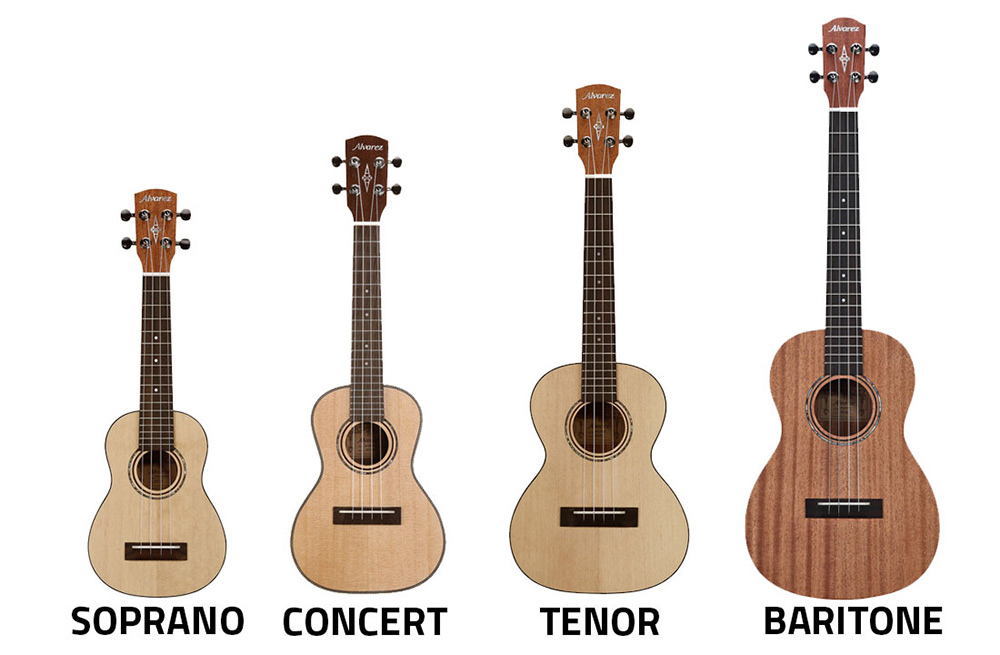🎵 Types of Ukuleles: A Quick Guide
Ukuleles come in four main sizes, from smallest to largest: Soprano, Concert, Tenor, and Baritone. Each has its own feel, sound, and ideal use case.
1. Soprano Ukulele
- Size: ~21 inches (smallest)
- Tuning: G–C–E–A (usually high-G)
- Sound: Bright, classic “island” tone
- Best for: Beginners, kids, traditional uke lovers
- Pros: Lightweight, portable, affordable
- Cons: Smaller fretboard can be tight for larger hands
2. Concert Ukulele
- Size: ~23 inches
- Tuning: G–C–E–A (high-G or low-G)
- Sound: Fuller and louder than soprano
- Best for: Beginners to intermediate players
- Pros: More finger room, balanced tone
- Cons: Slightly less portable than soprano
3. Tenor Ukulele
- Size: ~26 inches
- Tuning: G–C–E–A (often low-G for deeper tone)
- Sound: Rich, warm, more volume
- Best for: Performers, fingerstyle players, larger hands
- Pros: More frets, better projection
- Cons: Less traditional sound
4. Baritone Ukulele
- Size: ~30 inches (largest)
- Tuning: D–G–B–E (like the bottom 4 strings of a guitar)
- Sound: Deep, mellow, guitar-like
- Best for: Guitarists transitioning to uke
- Pros: Familiar tuning for guitar players
- Cons: Not standard uke tuning, fewer beginner resources
🎸 Other Ukulele Variants
- 5-, 6-, and 8-string ukuleles: Offer richer, layered sounds
- Hybrid instruments:
- Banjolele: Banjo-ukulele hybrid with a twangy tone
- Guitarlele: 6-string uke tuned like a guitar capoed at the 5th fret
- Bass Ukulele: Deep, bass-like tones in a compact body
🪵 Materials & Recommendations
- Materials: Ukuleles can be made from solid wood, laminate, or plastic.
- Beginner Tip: Start with a laminate soprano or concert in the $50–$150 range for good quality and value.


